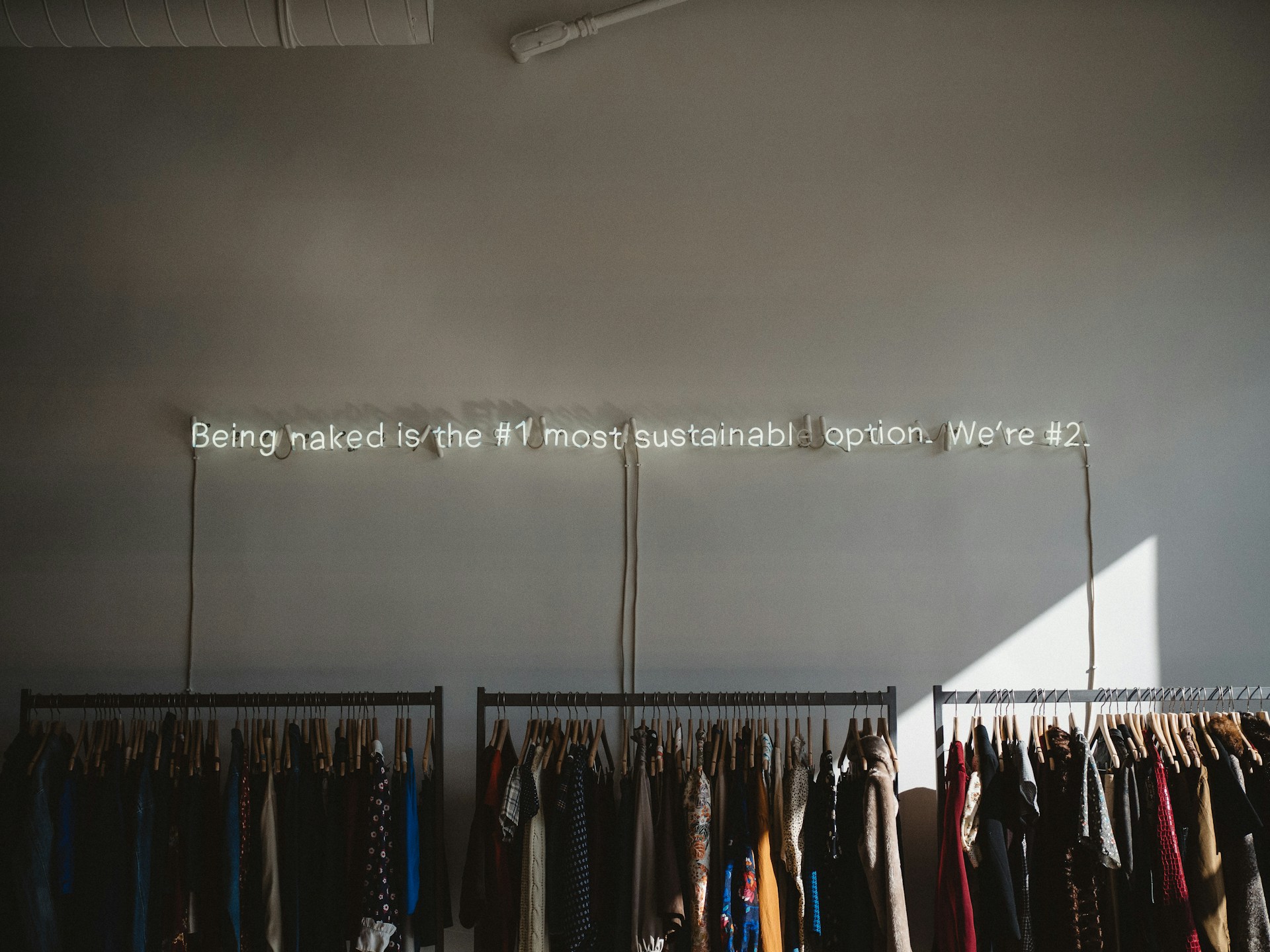Introduction
The fashion industry is one of the largest polluters in the world, contributing significantly to environmental degradation and social injustices. As awareness of these issues grows, so does the demand for sustainable fashion. Sustainable fashion brands are emerging as leaders in this movement, offering consumers ethical and eco-friendly alternatives to fast fashion. This comprehensive guide aims to provide a detailed overview of sustainable fashion brands, their practices, and how you can build an ethical wardrobe. Whether you’re new to sustainable fashion or looking to deepen your knowledge, this guide is for you.
1. Understanding Sustainable Fashion
Definition of Sustainable Fashion
Sustainable fashion refers to clothing that is designed, produced, distributed, and consumed in ways that are environmentally friendly and socially responsible. This approach considers the entire lifecycle of a garment, from raw material sourcing to end-of-life disposal.
The Environmental and Social Impacts of Fast Fashion
Fast fashion is characterized by rapid production, low-cost garments, and frequent turnover of trends. This model has severe environmental and social consequences, including:
- Massive textile waste ending up in landfills.
- High levels of water pollution and consumption.
- Exploitation of labor in developing countries.
- Significant carbon emissions due to energy-intensive production processes.
Importance of Sustainable Fashion for the Planet and Society
Choosing sustainable fashion helps mitigate these negative impacts. It promotes:
- Conservation of natural resources.
- Reduction in greenhouse gas emissions.
- Fair wages and safe working conditions for workers.
- Lower levels of toxic chemical use.
2. Key Criteria for Sustainable Fashion Brands
Use of Eco-Friendly Materials
Sustainable fashion brands prioritize the use of materials that have minimal environmental impact, such as:
a. Organic Cotton:
Grown without synthetic pesticides or fertilizers.
b. Recycled Fabrics:
Repurposing materials like plastic bottles into fibers.
c. Hemp and Linen:
Require less water and pesticides to grow.
d. Tencel and Modal:
Made from sustainably harvested wood pulp.
Ethical Labor Practices and Fair Trade
These brands ensure that their workers are treated fairly and paid living wages. Fair trade certifications often guarantee that the brand follows ethical labor practices.
Transparency and Traceability in the Supply Chain
Transparency means that a brand openly shares information about its supply chain, including where and how its products are made. This helps consumers make informed choices.
Environmental Conservation Efforts
Sustainable fashion brands actively work to reduce their carbon footprint, conserve water, and implement waste reduction strategies. Some invest in renewable energy or carbon offset programs.
Commitment to Circular Fashion
Circular fashion involves designing products for longevity, reparability, and recyclability. Brands may offer take-back programs, repair services, or use biodegradable materials to ensure that products have a minimal environmental impact at the end of their lifecycle.
3. Top Sustainable Fashion Brands to Know
1. Patagonia
Overview:
Patagonia is a pioneer in sustainable outdoor clothing.
Sustainability Practices:
- Uses recycled materials in over 68% of its line.
- Invests in environmental conservation projects.
- Offers a repair and reuse program called Worn Wear.
Key Products:
High-performance outdoor gear, casual wear.
2. Eileen Fisher
Overview:
Eileen Fisher is known for its simple, timeless designs and commitment to sustainability.
Sustainability Practices:
- Uses organic and recycled fibers.
- Offers a take-back program to recycle old garments.
- Prioritizes fair labor practices.
Key Products:
Women’s apparel, including dresses, tops, and pants.
3. Stella McCartney
Overview:
Stella McCartney is a luxury brand that integrates sustainability into its high-fashion designs.
Sustainability Practices:
- Avoids leather and fur.
- Uses organic cotton, recycled polyester, and sustainable viscose.
- Partners with environmental organizations to promote sustainable practices.
Key Products:
Designer clothing, accessories, and footwear.
4. Reformation
Overview:
Reformation creates stylish, trendy clothing with a focus on sustainability.
Sustainability Practices:
- Uses eco-friendly materials like Tencel and recycled fabrics.
- Provides transparency about its sustainability metrics.
- Implements energy-efficient practices in its factories.
Key Products:
Dresses, denim, and casual wear.
5. Everlane
Overview:
Everlane is committed to “radical transparency” in its production processes.
Sustainability Practices:
- Shares detailed cost breakdowns of products.
- Uses organic cotton, recycled materials, and sustainable leather.
- Invests in ethical factories with fair labor practices.
Key Products:
Basic wardrobe staples, including T-shirts, jeans, and shoes.
4. How to Identify Genuine Sustainable Fashion Brands
Recognizing Certifications and Labels
Certifications and labels can help verify a brand’s sustainability claims. Look for:
a. GOTS (Global Organic Textile Standard):
Certifies organic textiles.
b. Fair Trade:
Ensures fair wages and working conditions.
c. B Corp:
Measures a company’s social and environmental performance.
d. Cradle to Cradle:
Certifies products designed for a circular economy.
Investigating Brand Transparency
Brands that are genuinely committed to sustainability will openly share information about their supply chains, production processes, and labor practices. Transparency reports and detailed product information are good indicators.
Reading Reviews and Third-Party Reports
Consumer reviews and third-party reports from organizations like Greenpeace, Fashion Revolution, and the Clean Clothes Campaign can provide insights into a brand’s sustainability practices.
Avoiding Greenwashing
Greenwashing involves making misleading claims about a product’s environmental benefits. To avoid being misled:
- Look for specific information and data supporting sustainability claims.
- Be skeptical of vague terms like “eco-friendly” without detailed explanations.
- Research the brand’s overall sustainability strategy and practices.
5. Benefits of Supporting Sustainable Fashion Brands
Environmental Benefits
By choosing sustainable fashion, you help reduce pollution, conserve resources, and decrease the carbon footprint of your wardrobe.
Social Benefits
Sustainable fashion supports fair wages, safe working conditions, and ethical treatment of workers. It also promotes social equity by providing fair employment opportunities.
Personal Benefits
Sustainable fashion products are often of higher quality and more durable than fast fashion items. Investing in sustainable pieces can save money in the long run and contribute to a unique, timeless wardrobe.
6. Building a Sustainable Wardrobe
Tips for Transitioning to a Sustainable Wardrobe
a. Start Small:
Begin by replacing basics with sustainable alternatives.
b. Buy Less, Choose Well:
Focus on quality over quantity.
c. Mindful Shopping:
Only buy what you need and love.
d. Care and Repair:
Extend the life of your clothes through proper care and repairs.
Essential Sustainable Fashion Pieces
Invest in versatile, timeless pieces that can be mixed and matched. Consider items like organic cotton T-shirts, sustainable jeans, and ethically made outerwear.
Mixing Sustainable Items with Existing Wardrobe Pieces
Integrate sustainable fashion into your current wardrobe by combining new ethical purchases with your existing clothes. This approach is both practical and economical.
Sustainable Fashion on a Budget
a. Thrifting:
Shop at second-hand stores for unique finds.
b. Renting:
Use rental services for special occasions.
c. Swapping:
Participate in clothing swaps with friends or online communities.
7. Sustainable Fashion Trends
Overview of Current Trends
Sustainable fashion is becoming mainstream, with trends like minimalist fashion, slow fashion, and capsule wardrobes gaining popularity.
Innovations in Sustainable Materials and Technologies
New materials like lab-grown leather, mushroom leather, and bio-fabricated textiles are emerging. Technologies like 3D printing and digital fashion are also reducing waste.
The Rise of Second-Hand and Vintage Fashion
The second-hand market is booming as consumers seek unique, affordable, and sustainable options. Vintage fashion offers a way to express individuality while reducing environmental impact.
Influence of Sustainable Fashion on the Mainstream Industry
Mainstream brands are increasingly adopting sustainable practices. Collaborations between sustainable brands and big retailers are becoming more common, helping to bring eco-friendly fashion to a wider audience.
8. Challenges and Opportunities in Sustainable Fashion
Common Challenges Faced by Sustainable Fashion Brands
a. Cost of Sustainable Materials:
Eco-friendly materials can be more expensive.
b. Supply Chain Complexity:
Ensuring ethical practices throughout the supply chain is challenging.
c. Consumer Perception:
Overcoming the perception that sustainable fashion is less fashionable or more expensive.
Opportunities for Growth and Innovation
a. Technological Advancements:
Innovations in materials and production processes.
b. Increased Consumer Awareness:
Growing demand for transparency and sustainability.
c. Policy and Regulation:
Supportive policies and regulations promoting sustainable practices.
The Role of Consumers in Driving Change
Consumers play a crucial role in driving the sustainable fashion movement. By making informed choices and supporting ethical brands, consumers can influence industry practices.
9. Future of Sustainable Fashion
Predictions for the Next Decade
Sustainable fashion will continue to grow, driven by consumer demand and technological advancements. The industry is likely to see increased collaboration and innovation.
Potential Impact of Technological Advancements
Technologies like blockchain for supply chain transparency, AI for efficient production, and bio-fabrication for sustainable materials will shape the future of fashion.
How Global Policies and Regulations Might Shape the Future
Government regulations and international agreements focused on sustainability will play a significant role in promoting eco-friendly practices in the fashion industry.
Role of AI and Machine Learning in Sustainable Fashion
AI and machine learning can optimize production processes, reduce waste, and personalize consumer experiences, further promoting sustainability.
10. Resources for Sustainable Fashion Enthusiasts
Blogs, Websites, and Online Communities
a. The Good Trade:
A comprehensive guide to sustainable living.
b. EcoCult:
Covers sustainable fashion news and trends.
c. Fashion Revolution:
Promotes transparency and ethical practices in fashion.
Books and Documentaries
a. Books:
- “Overdressed: The Shockingly High Cost of Cheap Fashion” by Elizabeth L. Cline
- “Fashionopolis: The Price of Fast Fashion and the Future of Clothes” by Dana Thomas
- “Wardrobe Crisis: How We Went from Sunday Best to Fast Fashion” by Clare Press
b. Documentaries:
- “The True Cost” (2015): A documentary exploring the impact of fashion on people and the planet.
- “RiverBlue” (2016): Investigates the impact of fashion on the world’s water supply.
- “Minimalism: A Documentary About the Important Things” (2015): While not solely about fashion, it discusses the broader impacts of consumerism, including clothing.
Apps and Tools for Finding and Shopping Sustainable Brands
a. Good On You:
An app that rates brands based on their sustainability practices.
b. DoneGood:
A browser extension that helps find ethical alternatives while shopping online.
c. Depop and Poshmark:
Online marketplaces for buying and selling second-hand clothing.
Organizations and Certifications Promoting Sustainable Fashion
Fashion Revolution:
A global movement encouraging consumers to ask brands #WhoMadeMyClothes.
Ellen MacArthur Foundation:
Promotes a circular economy, including in the fashion industry.
Textile Exchange:
Works to drive industry transformation in preferred fibers, integrity, standards, and responsible supply networks.
Conclusion
As the fashion industry grapples with its environmental and social impacts, sustainable fashion brands offer a beacon of hope. By making informed, ethical choices, we can collectively drive the industry toward a more sustainable future. Supporting these brands not only benefits the planet but also ensures fair treatment for workers and higher-quality products for consumers. The shift towards sustainable fashion is not just a trend but a necessary evolution for a healthier, more equitable world.




